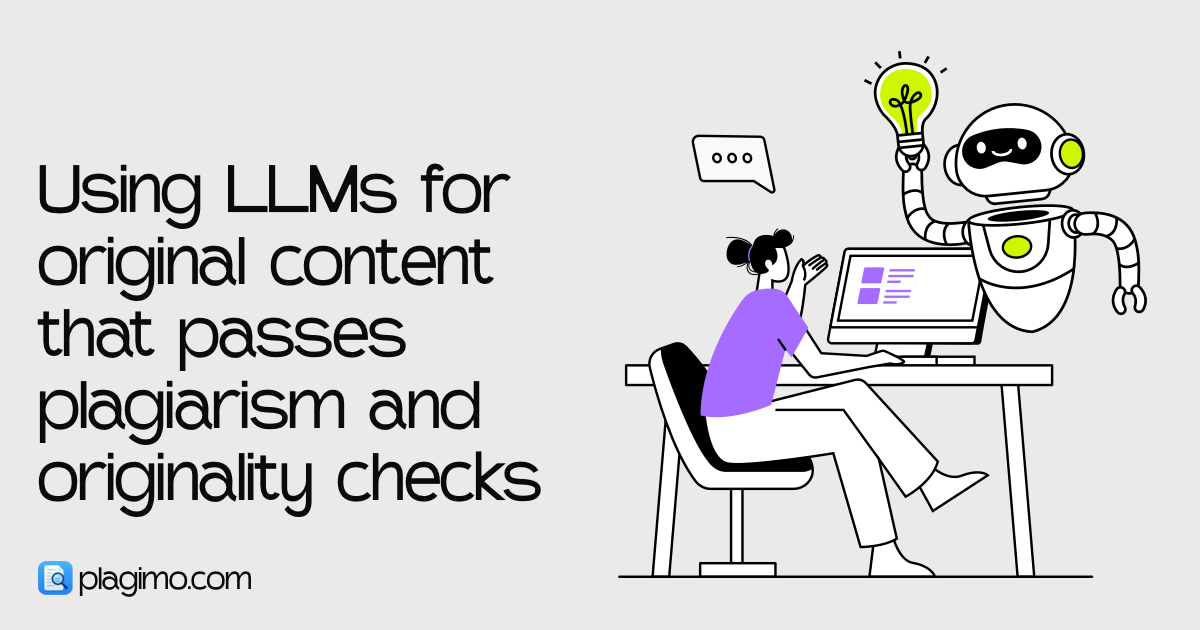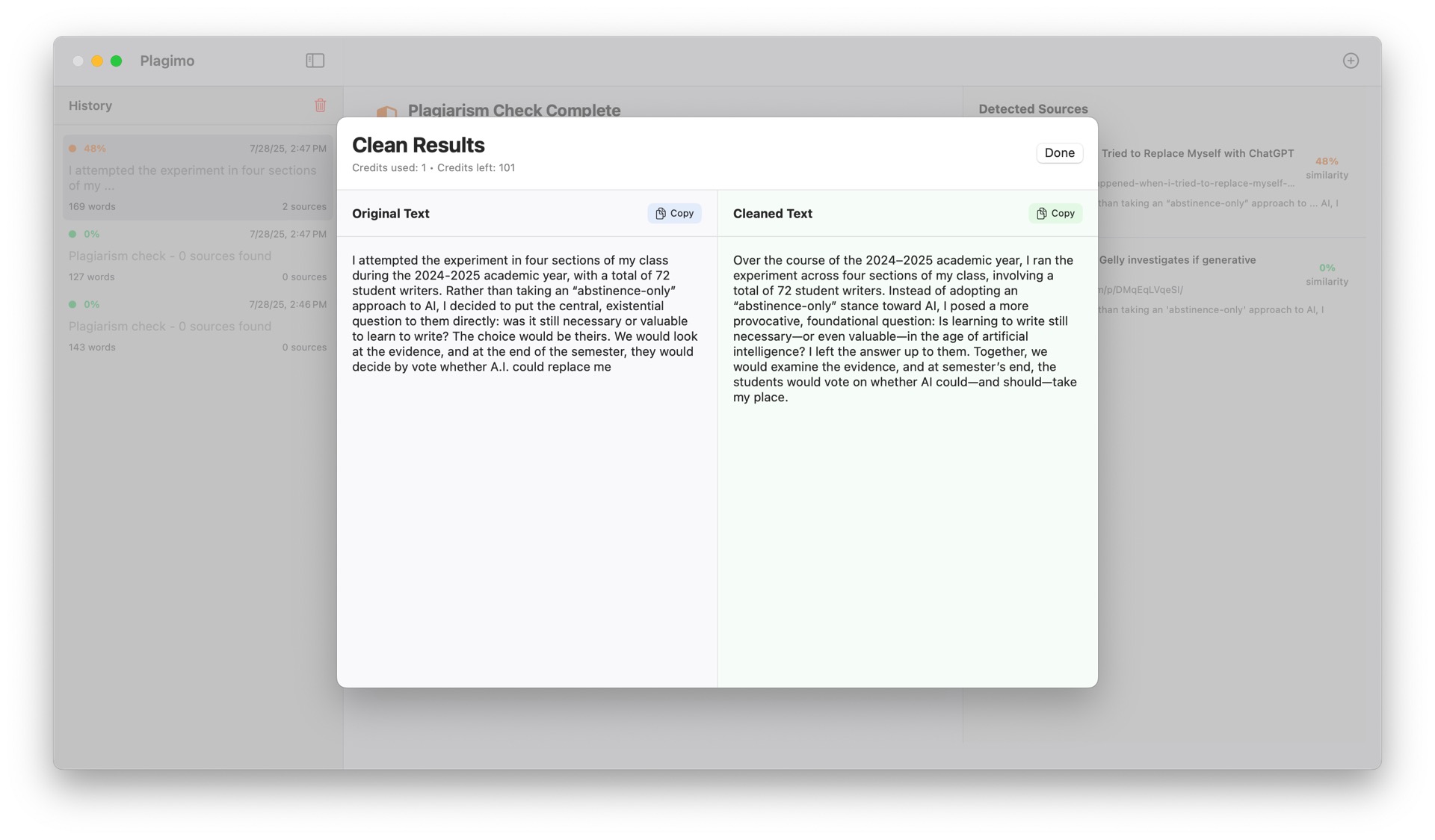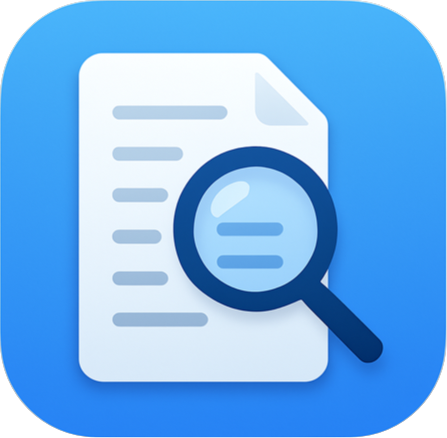
Using LLMs for original content that passes plagiarism and originality checks
Learn to use LLMs like ChatGPT to write original content that clears plagiarism and originality checks. Discover prompt patterns and how Plagimo's fast plagiarism checker ensures your AI-assisted writing stays authentic.
Ilona Thomas
08 Aug 2025
Large Language Models are powerful writing partners. They help you brainstorm, structure arguments, and refine tone. The key is to use them with intention so your final draft reflects your thinking, your sources, and your voice.
This guide shows you how to work with ChatGPT, Google Gemini, and Anthropic's Claude to produce original content. You will see how to guide prompts, shape drafts, verify facts, and finish with a fast, private, and accurate originality check in Plagimo.
#What Original Means When You Use LLMs
Originality is more than new phrasing. It means the ideas you present are grounded in your research, expressed in your voice, and supported with verifiable sources. LLMs can suggest structure and language, yet they do not guarantee accuracy. Treat their output as a starting point, then add analysis, examples from your experience, and citations that match your field or publication.
When you revise, look for traces of generic patterns, clichés, and overly familiar sentence shapes. Replace them with specific details, concrete verbs, and transitions that sound like you. A short pass with Plagimo at key moments helps you keep phrasing distinct and properly attributed.
#A Practical Workflow With ChatGPT, Gemini, and Claude
Start with a plan, then collaborate with the model in short, focused loops. Each loop should move you closer to your message and further into your own voice.
Define your angle: write three sentences that state your thesis, audience, and outcome.
Ask for an outline: request 5 to 7 section ideas with a suggested order.
Draft in chunks: generate 150 to 250 words per section, then immediately rewrite that chunk in your style.
Add your evidence: insert your data points, case studies, or readings.
Revise for flow: ask the model for transition ideas and alternative topic sentences.
Validate originality: run a quick Plagimo check on any section that feels close to a source.
Finalize: assemble sections, smooth tone, and run a full Plagimo scan.
#Prompt Patterns That Produce Unique Writing
Good prompts give structure without dictating every line. Aim for clarity about role, audience, and boundaries, then bring your perspective into the rewrite.
Role and audience: “You are an editor for graduate-level readers. Make suggestions that raise clarity and rigor.”
Boundaries: “Avoid clichés. Prefer specific examples. Keep sentences under 22 words.”
Voice seed: “Here are two paragraphs in my style. Analyze and summarize my voice, then apply it to the next section.”
Source handoff: “I will provide three sources. Extract key claims with citations. Flag anything uncertain for manual verification.”
Draft-and-rewrite: “Create a 200-word draft, then produce a second version that is more concrete and example-driven.”
Use these as scaffolding. After each model response, add facts from your notes, adjust tone, and cut anything that feels generic.
#Revision Techniques That Strengthen Originality
Once you have a working draft, deepen it with your judgment. Replace vague statements with specific evidence or fresh examples. Swap abstract nouns for verbs that show action. Vary sentence length to reflect your natural cadence. Where a paragraph leans too heavily on model phrasing, pause and re-outline that section in your own words before you write again.
Read aloud to spot borrowed rhythm or repeated sentence openings. If a passage still feels familiar, reframe the idea: change the order of points, introduce a counterexample, or add a brief story from your experience.
#Fact Checking, Citations, and Source Tracking
LLMs may produce confident claims without reliable backing. Build a simple citation habit that protects credibility and supports originality.
Maintain a source log: title, author, link, and one-line summary of how you used it.
Verify claims: check dates, numbers, quotes, and names against primary sources.
Cite precisely: attribute core ideas, paraphrased insights, and distinctive phrasing.
Keep your language: after citing, restate the idea in your structure and tone.
Treat the model as an assistant, then let your research and decisions shape the final text.
#Run Smart Originality Checks With Plagimo
Plagimo fits naturally into this workflow. It gives you quick feedback during drafting and thorough analysis before publishing. Short scans help you catch close paraphrases early. Full-document scans highlight specific lines, similar phrasing, and potential citations to add.
Speed: check a paragraph in seconds, scan long pieces quickly.
Privacy: your text stays protected while you refine sensitive work.
Accuracy: precise matching and clear highlights guide targeted edits.
Usability: smooth experience in the macOS app and the web app.

Use Plagimo after your first rewrite of each section and again when the whole draft is stable.
#Common Pitfalls To Avoid
Generic output: long, even sentences and vague claims signal model residue. Add details, verbs, and examples from your field.
Unverified facts: never ship dates, statistics, or quotes without a source check.
Shallow paraphrase: changing a handful of words keeps the structure intact. Reshape the idea and add your own analysis.
Prompt dependence: if you ask the model for every sentence, your voice fades. Write through key passages yourself.
#A 30-Minute LLM-to-Originality Routine
You can raise quality in a short session that fits any schedule. Choose one section of your draft.
Generate a 200-word section with your chosen model.
Rewrite the section entirely in your own words from a blank paragraph.
Insert a citation or example from your notes.
Run a quick Plagimo scan on that section and fix flagged lines.
Read aloud and adjust rhythm and transitions.
Move to the next section and repeat.
After two or three loops, compile the sections, read once for flow, and run a full Plagimo scan before sharing.
#Make AI Collaboration Original, Credible, and Yours
LLMs can accelerate thinking when you stay in control of structure, facts, and voice. Treat model output as a draft, enrich it with your expertise, and verify claims with care. Plagimo completes the loop with fast, private, and accurate originality checks that help you publish confidently. Open the macOS app or sign in to the web app, run a check on your current draft, and make originality the easiest step in your process.
Get started: outline your next piece and draft one section with an LLM.
Strengthen voice: rewrite in your style and add concrete examples.
Finish strong: scan with Plagimo and deliver work you can stand behind.
Wrote a full, human-sounding post with clear sections, three focused lists, and a strong CTA tied to Plagimo.
Explained how to use ChatGPT, Gemini, and Claude responsibly to produce original, verifiable content.
Emphasized privacy, speed, accuracy, and usability where Plagimo fits into the workflow.
